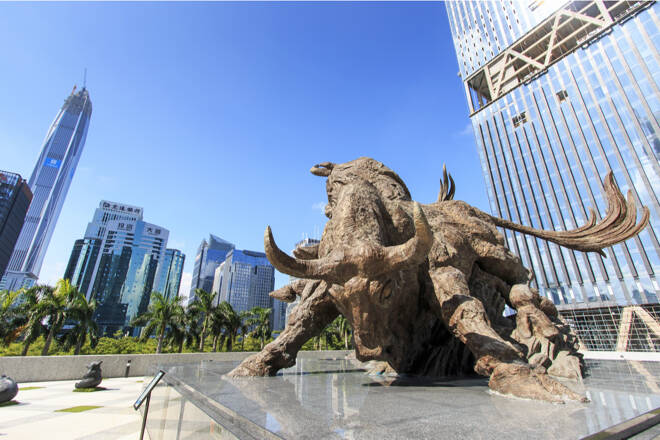Advertisement
Advertisement
Hang Seng Index, ASX 200, Nikkei 225 Index: China Economy in the Spotlight
By:
Hotter retail sales figures ignited Fed rate hike bets, impacting Nasdaq, Dow, and S&P 500, painting a complex picture for Wednesday's session.
Key Insights:
- Nikkei, Hang Seng, and ASX200 rebounded, countering Monday’s losses.
- US retail sales figures will impact markets, hinting at a Fed rate hike.
- China economy to test risk sentiment amidst ongoing Middle East conflict.
Overview of the Tuesday Session
On Tuesday, the Nikkei was in recovery, following the Monday sell-off, with the Hang Seng Index and the ASX200 also ending the session in positive territory.
Hopes of containing the Middle East conflict through diplomatic channels drove demand for US equities. The positive sentiment spilled over to the Asian session on Tuesday. The news of several Middle Eastern nations favoring a ceasefire reduced fears of further escalation.
Investors brushed aside US economic indicators, while dovish Fed commentary contributed to the positive US session.
On Monday, the Nasdaq Composite Index rallied 1.20%, with the Dow and S&P 500 gaining 0.93% and 1.06%.
There were no economic indicators from the Asian region on Tuesday to influence market risk sentiment. Hawkish RBA minutes failed to overshadow investor sentiment toward the Middle East conflict. However, investors considered earnings results and news of Chinese companies announcing share buy-back plans.
The Wednesday Session: China in the Spotlight
Overnight US economic indicators from Tuesday and Fed commentary will set the tone for the Wednesday session.
US retail sales figures for September beat forecasts. The hotter-than-expected retail sales figures fueled bets on a Fed interest rate hike. Investors responded to the numbers, leaving the US equity markets with a mixed Tuesday session.
The Nasdaq Composite Index and S&P 500 fell by 0.25% and 0.01%, while the Dow gained 0.04%.
While the fear of a Fed rate hike will test the buyer appetite for riskier assets, economic data from China will influence market risk sentiment. Industrial production, fixed asset investment, unemployment, retail sales, and third-quarter GDP numbers will move the dial.
Economists forecast the Chinese economy to expand by 4.4% in Q3 year-over-year vs. 6.3% in the previous quarter. While the GDP numbers need consideration, an improvement in industrial production and retail sales figures would indicate a more positive macroeconomic environment.
However, economists forecast industrial production to rise by 4.3% year-over-year vs. 4.5% in August.
In the Futures Markets, the ASX 200 and the Nikkei 225 were up 20 points and 80 points, respectively.
ASX 200
The ASX 200 gained 0.42% on Tuesday. Tech stocks found much-needed support. The S&P/ASX All Technology Index (XTX) rose by 0.99%. Mining stocks and the big four banks also ended the session in positive territory.
Westpac Banking Corp (WBC) and the National Australia Bank (NAB) rose by 0.80% and 0.82%. ANZ Group (ANZ) and the Commonwealth Bank of Australia (CBA) ended the session up 0.82% and 0.53%.
Mining stocks had a positive session. Rio Tinto (RIO) rallied 1.20%, with Fortescue Metals Group (FMG) gaining 1.35%. BHP Group Ltd (BHP) and Newcrest Mining (NCM) rose by 0.86% and 0.15%. Rio Tinto beat earnings forecasts, giving the mining sector a boost.
Oil stocks also ended the day in positive territory. Woodside Energy Group (WDS) and Santos Ltd (STO) ended the day up 0.08% and 0.52%.
Hang Seng Index
On Monday, the Hang Seng Index gained 0.75%.
Alibaba Group Holding Ltd (HK:9988) and Tencent Holdings Ltd (HK:0700) rose by 0.86% and 0.33%.
Bank stocks also had a positive session. China Construction Bank (HK:0939) and the Industrial and Commercial Bank of China (HK:1398) ended the session up 1.08% and 1.56%. HSBC Holdings PLC (HK:0005) rose by 0.08%.
Nikkei 225
(Graph for reference purposes only)
The Nikkei gained 1.20%, partially offsetting the sell-off from Monday.
Bank stocks, including Sumitomo Mitsui Financial Group (8316) and Mitsubishi UFJ Financial Group (8306), rose by 0.68% and 0.28%. However, the main components of the Nikkei saw strong gains.
Tokyo Electron Limited (8035) and SoftBank Group Corp. (9984) rallied 2.38% and 2.65%, with Sony Corp. (6758) gaining 1.55%.
KDDI Corp. (9433) and Fast Retailing Co (9983) ended the day up 0.72% and 0.83%.
For upcoming economic events, check out our economic calendar.
About the Author
Bob Masonauthor
With over 28 years of experience in the financial industry, Bob has worked with various global rating agencies and multinational banks. Currently he is covering currencies, commodities, alternative asset classes and global equities, focusing mostly on European and Asian markets.
Advertisement
